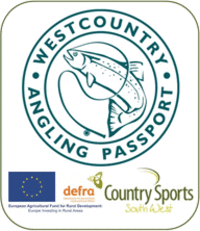The River Isle originates from head springs situated on the western side of Wadeford, where it converges with waters flowing from Combe St Nicholas. Flowing in a westerly direction, it passes through Pudleigh and Nimmer before reaching Hornsbury Mill. After a brief stretch, it changes course to the north, passing Peasmarsh, Donyatt, Ilminster, Puckington, and Isle Abbotts, ultimately joining the River Parrett just above Hambridge. The river spans approximately 14 miles, wherein the first six miles exhibit a descent of 250 feet. However, it subsequently meanders at a sluggish pace, with a decrease in elevation of only 80 feet, until it merges with the Parrett. Along its journey from source to mouth, the River Isle is joined by tributaries such as the River Ding and the Fivehead River with Venner's Water, as well as several unnamed brooks that drain the northeastern slopes of the Blackdown Hills. On the northwestern side, tributaries like the Dowlish Stream with Stretford Water and the Wall Brook drain Windwhistle Hill, Sprays Hill, and the hill spur above Whitelackington. Approximately one mile before its confluence with the Parrett, the Westport Canal joins the River Isle. This camera was installed and is maintained by the Environment Agency and can be viewed
here. All content is available under the
Open Government Licence v3.0.The River Isle at Ashford Mill typically maintains a range between 0.08m and 1.30m. Monitoring data indicates that these levels have been observed for 90% of the time since recording began. Over the past 12 months, the River Isle at Ashford Mill has consistently ranged between 0.08m and 0.37m, persisting for at least 151 days within the year. The highest recorded level at the River Isle at Ashford Mill occurred on Saturday, December 13th, 2008, at 9:30 am, reaching 2.20m.Puckington, a village and civil parish, is located approximately 10 miles southeast of Taunton and 10 miles west of Yeovil. Prior to the Norman Conquest, the manor was held under Muchelney Abbey. However, following the events of 1066, it came under the ownership of Roger de Courcelles. Subsequently, it passed through the hands of various families until the execution of the Duke of Suffolk in 1553, at which point it reverted to the Crown and was eventually sold to the Portmans of Orchard Portman.



